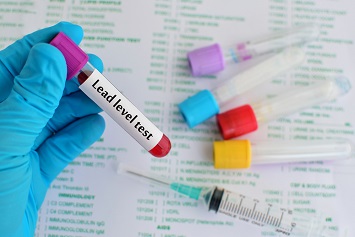California’s Department of Public Health must notify the state’s Division of Occupational Safety and Health (Cal/OSHA) when a worker’s blood lead level tests at or above 20 micrograms per deciliter (µg/dL) under a new state law.
CDPH now has the authority it lacked to make a referral to Cal/OSHA. Cal/OSHA must treat the referral as an official complaint involving a potentially serious health and safety violation under the new statute.
Governor Gavin Newsom signed Assembly Bill 35 into law. Assemblymember Ash Kalra (D) introduced the bill with support from the Environmental Working Group.
“Investigations have shown that some businesses have been exposing workers to dangerous levels of lead year after year,” EWG’s California director of government affairs Bill Allayaud said in a statement from the group.
“But the new law requires that state agencies take immediate action and no longer sweep the lead issue under the rug.”
More than 500 cases of occupational lead exposure in the last decade could have been investigated by Cal/OSHA but were not, according to findings published by the Center for Health Journalism at the University of Southern California’s Annenberg School for Communication and Journalism.
California Statute Provisions
CDPH now must report a case within five business days to Cal/OSHA under the department’s existing occupational lead poisoning prevention program. The blood lead level that triggers the referral does not supersede the action level established in Cal/OSHA’s regulations.
Once Cal/OSHA receives a report from CDPH, it is considered an official complaint from a government representative and Cal/OSHA may inspect the employer’s workplace or job site. Cal/OSHA must make any citations or penalty amounts issued publicly available.
Occupational Lead Exposure
The federal permissible exposure limit (PEL) for lead is fifty micrograms per cubic meter of air (50 µg/m3) averaged over an 8-hour period. The federal standard also mandates medical surveillance of lead-exposed employees that includes testing blood lead levels.
Employees with elevated blood lead levels must be removed from duty until levels drop below 40 µg/g of whole blood in two consecutive blood tests.
The federal lead standard includes housekeeping, respiratory protection, and sanitation requirements in addition to the PEL, monitoring, and medical removal provisions.
Construction workers are exposed to lead during demolition, removal, or renovation of buildings painted with lead-based paint. Workers also may be exposed during demolition, installation, or maintenance of lead pipes and fittings. Other exposures include the lead linings in tanks, leaded glass, radiation protection, and work involving soldering and lead alloys and metal. Workers in indoor firing ranges may be exposed to the lead in ammunition.
Workers also can come in contact with lead in rechargeable batteries, brass, or bronze objects, and radiators.
The National Institute for Occupational Safety and Health (NIOSH) monitors adult lead exposure through its Adult Blood Lead Epidemiology and Surveillance (ABLES) program. California is one of 41 states participating in the ABLES program. Data collected through ABLES monitoring helps NIOSH identify industries and occupations where lead exposure occurs.

